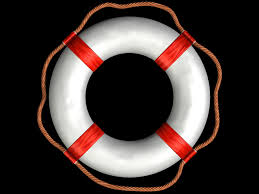Instant gratification not found on the path to
fitness
You know that person. Maybe you’ve even been that
person. The one who, come spring, laments the size of her thighs and engages in
drastic, crash diets to get her body “bathing suit ready,” only to be
struggling to zip her jeans again by fall and dreading the upcoming holiday season with its onslaught of baked goods that will cause this scenario to repeat itself
yet again, like a bizarre dieting version of the movie Groundhog Day.
Or maybe you’re the guy who hasn’t run a mile since
high school and, suddenly inspired, dusts off his old pair of Converse high
tops and attempts to run sub-seven minute miles at a local 5K race, pulls a
hamstring or injures a knee, and, as a result, retreats to the couch, swearing
off exercise again as a foolish, even dangerous, pursuit.
While these sudden bursts of motivation are clearly born of good intentions, a key factor is being overlooked. As Hunter S.
Thompson said, “Anything worth doing, is worth doing right.”
Change takes planning, patience and
perseverance. Even new mothers who are anxious to drop the weight gained during
pregnancy are reminded that “nine months up, means nine months down.”
Achieving weight loss and fitness is not easy; if it
were, everyone would do it. In this age of instant gratification, the idea of
not immediately getting what we want exactly when we want it, has little
appeal. But instant gratification is overrated, lacking the true satisfaction
that comes from achieving results through hard work and determination. Rather,
it’s a fleeting fulfillment that leaves us feeling empty and, similar to the
way in which certain foods are engineered to keep us wanting more, never truly sated.
Resorting to liquid or highly restricted diets that
lack calories and nutrients for the satisfaction of losing weight quickly for a specific event or time of year, is not sustainable. The minute something besides
lemon water and carrots enters your mouth, your body will cling to it like a
lifeboat and store it away in an effort to protect you from the next time you
attempt to starve yourself. Ultimately,
the weight will pile on quicker than it was lost and a sense of failure and
disappointment will set in, robbing you of your motivation and will to reach
your goals.

A friend of mine, after many fad diets and failed
attempts to lose weight, has finally found her way. It has taken a year, possibly
more, but she has been safely and steadily losing weight, shedding 50 pounds
through better nutrition and regular exercise. Last spring she ran her first
10K, her first mud run and her first duathlon. This year she will tackle a half
marathon and a triathlon. Her parents’ Christmas gift to her was a gym
membership. She has the support of her family but, first and foremost, she has
herself.

The path to lifelong fitness requires commitment and
dedication. Until you are willing to forego the instant gratification of
temporary weight loss and make the permanent, sustainable lifestyle changes
that lead to long-term fitness and health, you will never be truly satisfied.




